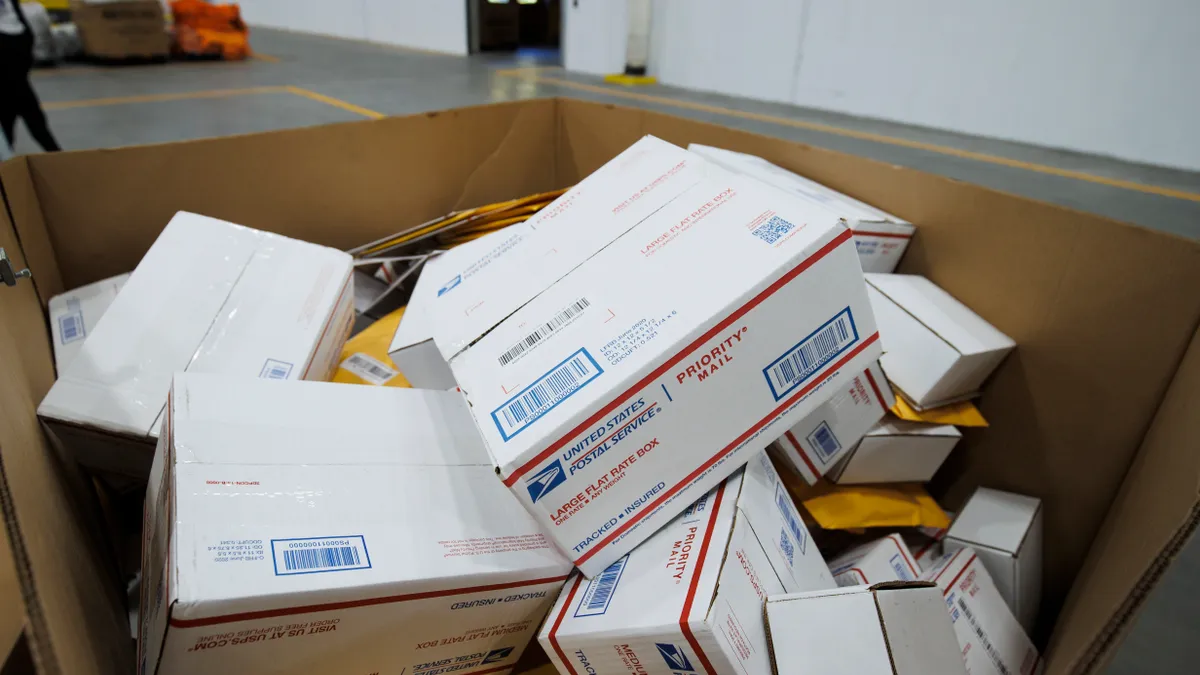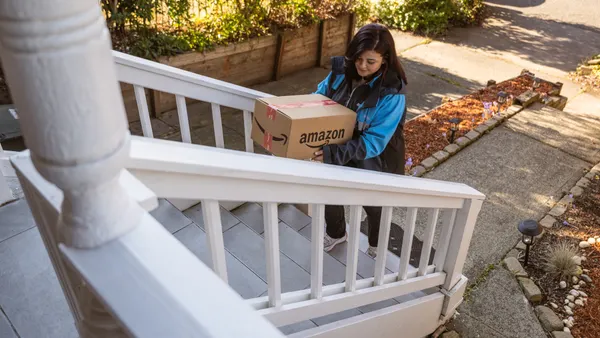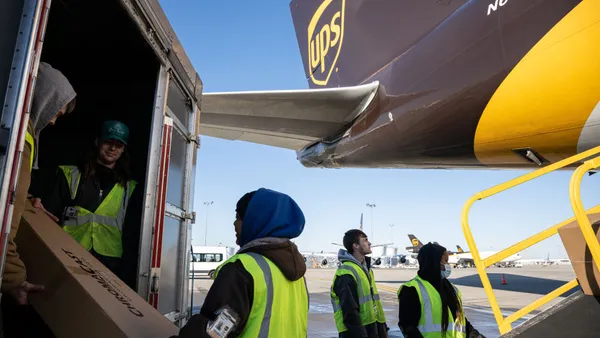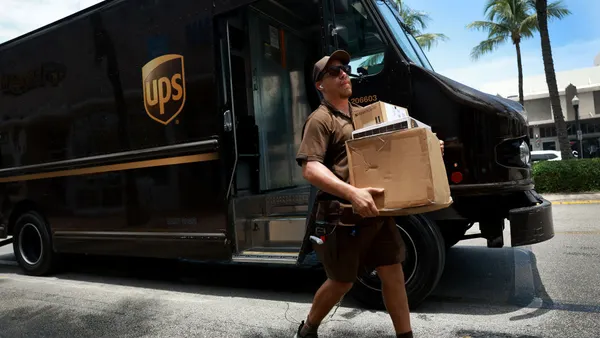The U.S. Postal Service believes it can effectively handle volume shifts sparked by its efforts to change how key shipping partners bring packages into its network, a claim which industry groups have pushed back against.
In recent months, the Postal Service has pressured consolidators like Pitney Bowes and DHL eCommerce, which handle and send customers' parcels to the agency's facilities for last-mile delivery, to inject Parcel Select volume into its network earlier in the shipping process. Experts have flagged delivery delays as a potential downside to the shift.
The Postal Service said in a June 12 filing to the Postal Regulatory Commission that it doesn't know the extent to which package volume will move further upstream; however, the agency said it is carefully assessing its capacity and ability to handle increased activity at impacted facilities. To help the agency evaluate capacity needs, potential Parcel Select customers provide projections of their expected volumes by rate category and entry facilities in contract negotiations.
"Given this approach, and given the capacity that exists to handle additional volume in our facilities and transportation, we are highly confident that we will be able to handle volume that migrates upstream," the Postal Service said.
However, if the Postal Service's evaluations on how much volume will shift upstream are off, it could have "devastating service impacts" for mail and packages, the Association for Postal Commerce said in a June 3 filing. The group noted that the changes will mean consolidators and their customers will be more exposed to potential Postal Service delays, a recurring issue amid the agency's shaky rollout of its network overhaul.
"As has been widely reported and acknowledged by the Commission, the Postal Service has recently been reporting service performance results that are well below its own targets, despite having lowered service performance standards," the Association for Postal Commerce said.
The Package Shippers Association said in its own filing on May 31 that there is no evidence the current Postal Service operating model can handle the shift upstream. Even if the agency could, the association said it is unrealistic to expect the continuation of consistent next-day shipping speeds — the norm for parcels after being brought to last-mile facilities.
"Accordingly, the effect of this change in 'goals' is that shippers and consumers will be forced to pay much higher prices for slower service," the Package Shippers Association said.
Despite concerns from stakeholders, the shift is necessary, according to the Postal Service. In a May 31 filing, the agency said it is "not a good business strategy" for third-party companies to handle package processing before bringing volume to the agency for last-mile delivery.
"Incentivizing third parties to aggregate volume that bypasses our package processing and local transportation operations leads to those operations being underutilized," the Postal Service said. "Rather than hollowing out our network in this manner, the Postal Service aims to enhance our capacity and ability to deliver packages."
To push consolidators toward this new operating model, the Postal Service plans to implement Parcel Select price hikes next month that vary depending on where users enter volume in its network. Shipments entered at delivery units, the final stop before a package reaches its destination, will experience the highest increase at 43.4% on average.
However, the actual impact of the price hikes will vary by customer. The majority of Parcel Select deliveries are covered by 30 contracts between the Postal Service and high-volume shippers, the agency said June 12. Each contract contains an annual adjustment clause that factors in rate changes, although some also feature provisions that limit the magnitude or frequency of the adjustment.
Still, raising published rates creates "a new anchor point from which to negotiate contract pricing," the Postal Service noted.
"If the rate relationships of the published prices had remained unchanged, parties may still have been incentivized to aggregate mail volume from multiple shippers for entry at the [delivery unit]," the agency said













